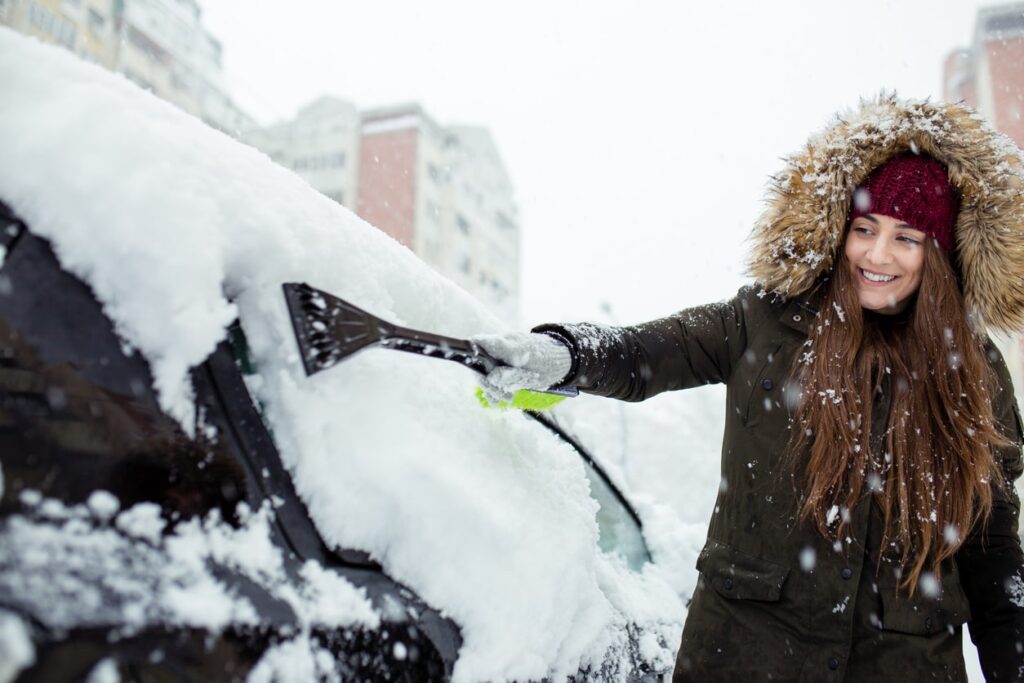Make sure teenage drivers are up to speed on safe driving practices. Teens represent just 13 per cent of the licensed driving population but account for approximately 20 per cent of all motor vehicle injuries and deaths.
It comes down to lack of experience. “Driver inexperience is a common factor in almost all kinds of traffic accidents,” says Hassan Al-Khairalla, operations manager of automotive services at CAA North & East Ontario (CAANEO). Inexperience can be even more dangerous with winter’s inclement weather and the hazardous road conditions that come with it.
Here are five winter driving tips from CAA’s resident automotive expert.
1. Don't be afraid to cancel plans
Drivers should keep an eye on weather reports and be willing to cancel their plans because of poor road conditions. “If the weather is bad, just stay home,” Al-Khairalla says.
2. Remove snow and ice
Driving around with snow blowing off your car isn’t just hazardous to you, it’s also dangerous for those around you. But clearing snow off your car’s roof and hood is more than just courteous. It’s the law. You can be fined $110 for failing to do so.
“Maintaining good visibility is key to safe driving,” Al-Khairalla says. “Drivers should have an unobstructed view in all directions.”
3. Slow down
Slick roadways necessitate leaving more space between vehicles as tires have less traction. “To come to a stop on slippery roads, gently press down on the brake pedal,” Al-Khairalla says. “When accelerating, your tires will spin, so press down gently on the accelerator to go.”
Don’t forget to drive with extra caution on bridges and overpasses, as they usually freeze first.
4. Watch for black ice
New drivers need to be aware that wet-looking pavement may actually be black ice. This deceptive condition usually occurs when the temperature drops in the late afternoon or evening, which can cause melting snow or rain to turn into ice on the roadway.
“Pay attention to changing temperature conditions,” Al-Khairalla says.“If you do hit black ice, remain calm and allow the car to pass over the ice.” That means try to keep the steering wheel straight and don’t slam on the brakes.
5. Prepare for the unexpected
Does your teen know what to do if he or she is involved in a traffic collision? Take time to go through the steps with them before they head out on their own. And consider finding an empty parking lot to practice stopping on snow and ice in a safe and controlled manner. The more practice, the better.
Towing Bill of Rights
Be aware of the risks associated with allowing non-CAA tow truck operators to provide you with roadside assistance. Know your rights as a motorist.
- You have the right to decide who can tow your vehicle and to what location unless otherwise directed by the police.
- A permission to tow form must be signed before towing starts, unless you have an auto club membership.
- The towing company must provide you with an itemized invoice before receiving payment.
- The final bill cannot be more than 10% above the quoted price.
- If you choose, you can pay by credit card.
- While it’s stored at a towing facility, you can access your vehicle to get your personal items during business hours
- A tow operator must notify you where your vehicle will be towed.
- Tow operators must disclose if they are receiving a financial incentive for towing your vehicle to a particular vehicle storage facility or repair shop.
Stay safe!
Make sure your teen is protected on the road by adding them as an Associate Member to your account at. Visit caaneo.ca/family for more information.

